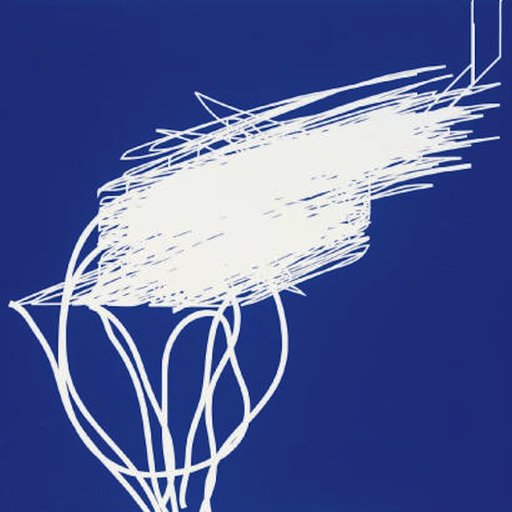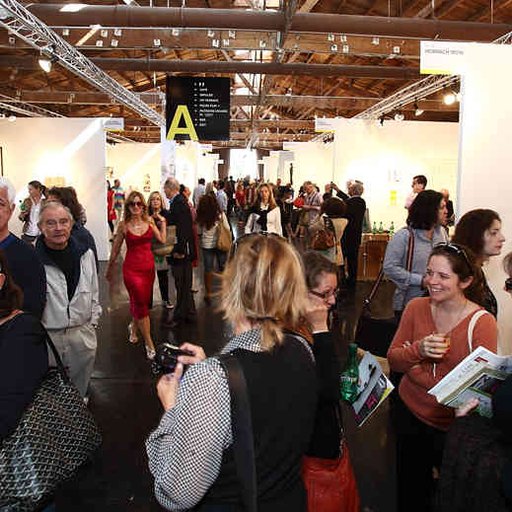With its climate of no-holds-barred ostentation, the week of Art Basel Miami Beach is a car extravaganza as well as an art event, with the latest Ferraris and Maseratis lining up outside the posher events—causing the curatorial crowd to stop and ogle their vehicular splendor. This year, however, a funky newcomer will be wheeling into town that marries art and the automotive: the Dream Machine, a custom Airstream travel trailer painted by the artist Jason Middlebrook that will be parked outside the Untitled fair, filled with objects that likewise bridge the divide between functional design and fine art.
The project is the joint effort of Sara Meltzer, a dealer who used to run a gallery in New York, and the architect and interior designer Suchi Reddy, two friends who founded the company weR2 with the concept of making contemporary art a more accessible part of day-to-day life. We spoke to Meltzer about the ambitions fueling the Dream Machine, and the unlikely but increasingly voguish proliferation of objects—ranging from pillows and playing cards to napkins and serving trays—bearing the work of famous figures the likes of Louise Bourgeois, Martin Puryear, and John Baldessari.
Where did the idea for the Dream Machine come from?
Suchi and I have been collaborating on weR2 and making functional objects with artists for almost two years, based on our love of art and design, and our passion for learning new things, going to new places, and meeting new people. And I have had an unexplainable love of Airstreams for a while now. In 2008, I did a project in Miami with artist Jude Tallichet in an Airstream Bambi outfitted by Knoll for DWR. Ever since then I have wanted to do something more elaborate, and in January I had the outlandish idea to search for one on Craigslist. I found one, bought it, and decided that Suchi and I should turn it into a pop-up shop for our line and anything else we want, and also make it a gorgeous living space. We called the Dream Machine because it looks like a machine and it’s the place where our collaborative dreams are coming to fruition.
You have said that the design for the space was inspired by Richard Hamilton’s iconic proto-Pop 1956 artwork Just What Is It That Makes Today’s Home So Different, So Appealing? How so?
Hamilton’s piece brings together pop culture and everyday life in a space that marks its time by crossing all of the creative vantage points I adore: art, design, architecture, and, well, life. It’s an icon marking the beginning of the Pop art movement, and it defines what the collaboration between Suchi and myself stands for, the idea of bringing everything together—things that are so different, and so appealing—to collect what is beautiful about life in one place.
The objects you’re presenting in the Dream Machine are widely varied, with some of them created directly with artists and others inspired by existing artworks. Are these objects art? Design? Something in between?
All of the objects in the Dream Machine are functional objects made with and inspired by artists. I’m most interested in how art and design meet, and all the objects selected are things that are useful within a home context, and therefore fit in our movable home.
When it comes to the pieces that are created directly with artists, what is the process behind that like? How does an artist get matched to an object, and who does it?
weR2 selects artist we admire, genuinely believe in, and want to work with to make beautiful or engaging functional items. As for the other objects not produced by weR2, they were all selected because of their function and design and because artists we admire were involved in their production.
Martin Puryear, for instance, is a highly regarded sculptor who shows with Matthew Marks and had a career retrospective at MoMA in 2007. His piece in the Dream Machine is a fun-looking red-and-white ergonomic pan scraper, which is quite a detour from the work he’s known for. How does something like that come about?
I’m a huge Martin Puryear fan, and the fact that someone who understands form so poignantly as a sculptor working in various media has collaborated to produce a functional pan scraper reinforces our belief in the intersection of art and design. And who doesn’t need a gorgeous pan scraper when traveling on the road in an Airstream? Or, for that matter, who doesn’t need a gorgeous Martin Puryear pan scraper, period?
When it comes to the objects inspired by artworks, how are those created? The Louise Bourgeois coasters were made posthumously—how were the designs chosen? Was it made with the estate?
The coasters were not produced by weR2—they’re among the many other objects that I selected to outfit the Dream Machine. I chose them because they’re beautiful and functional, and because Bourgeois is an artist I admire. Any object made posthumously like this is made with the approval of the estate, and that collaboration works in a variety of ways—for instance, the Warhol Foundation produces functional objects with Warhol images and has a very specific process for selecting and fabricating them.
Several of the works that you’re offering you personally produced through weR2 with artists who I believe you represented in your former New York gallery. How did the Jason Middlebrook candles come about? And how did you and Kate Shepherd decide on turning her paintings into napkins?
I still work with Jason whenever I can and I wanted to produce a product with him, so I went through images of works, did some editing, did some design, conceived of options, and showed him what I was interested in doing, and he loved where I went with it. We also commissioned him to do the design for the exterior of the Airstream. As for Kate, I actually didn’t represent her when I had the gallery—I wish I did, since I love her work and live with a wall painting of hers in my home—but she and I have been the closest of friends for many, many years. Suchi and I told her about what we were interested in doing and she came to us with the idea to create table linens. She was involved in all aspects of the design process.
Jason Middlebrook also created a design for the Dream Machine’s exterior, a riff on the elaborate geometric patterns that he typically creates on large slices of densely grained wood. What inspired his contribution?
We would like to continue to use the Dream Machine the same way we’re using it now, and we anticipate creating more designs and always working with an artist to mark the exterior in a unique way. We selected Jason for many reasons. We’re obviously big fans of his work, and of him, and the verticality of the design—which is also the pattern on one of his candles—seemed unexpected and stunning, and therefore a natural fit for us.
The market for these kinds of artist-designed objects is very large, and obviously growing apace. Why do you think that is?
I think art and design are coming together in more visible ways all the time. More people are aware of contemporary art than ever before, and more people are curious and engaged, yet art typically costs more than most people can or are willing to spend. When design and art meet in the form of functional objects made with and inspired by artists, a door is opened for everyone to have something by an artist. With these products, you’re touching, living with, even literally wiping your mouth with something beautiful created by an artist. It’s not just a nice hostess gift—it’s a way of taking art off the pedestal and putting it in your life. And we’re focusing primarily on making objects that cost under $300 so it really is possible for all.
One amazing thing about the Dream Machine is that, like the objects inside, it’s for sale. How much is it?
The Dream Machine is amazing for so many reasons—it’s been such an exciting and fun project to work on, with so many people coming together to make it happen. As for the price… are you interested in buying it?
If it’s under $300, sure. Kidding! So, what’s next for the Dream Machine after Miami?
The Dream Machine will be traveling a bit, with its next stop at the entrance of New York’s High Line on 14th Street on December 13, where we’ll be partnering with Artware Editions to do another art, design, and life pop-up for a New York audience. Then we’re planning to take it to Chicago and Los Angeles before hitting the Hamptons over the summer. At each spot, we’ll change the Dream Machine to merchandise it differently and present different types of projects within it. But, for now, we’re thrilled to have it on tour through the end of the year. Stay tuned for what 2015 brings!























